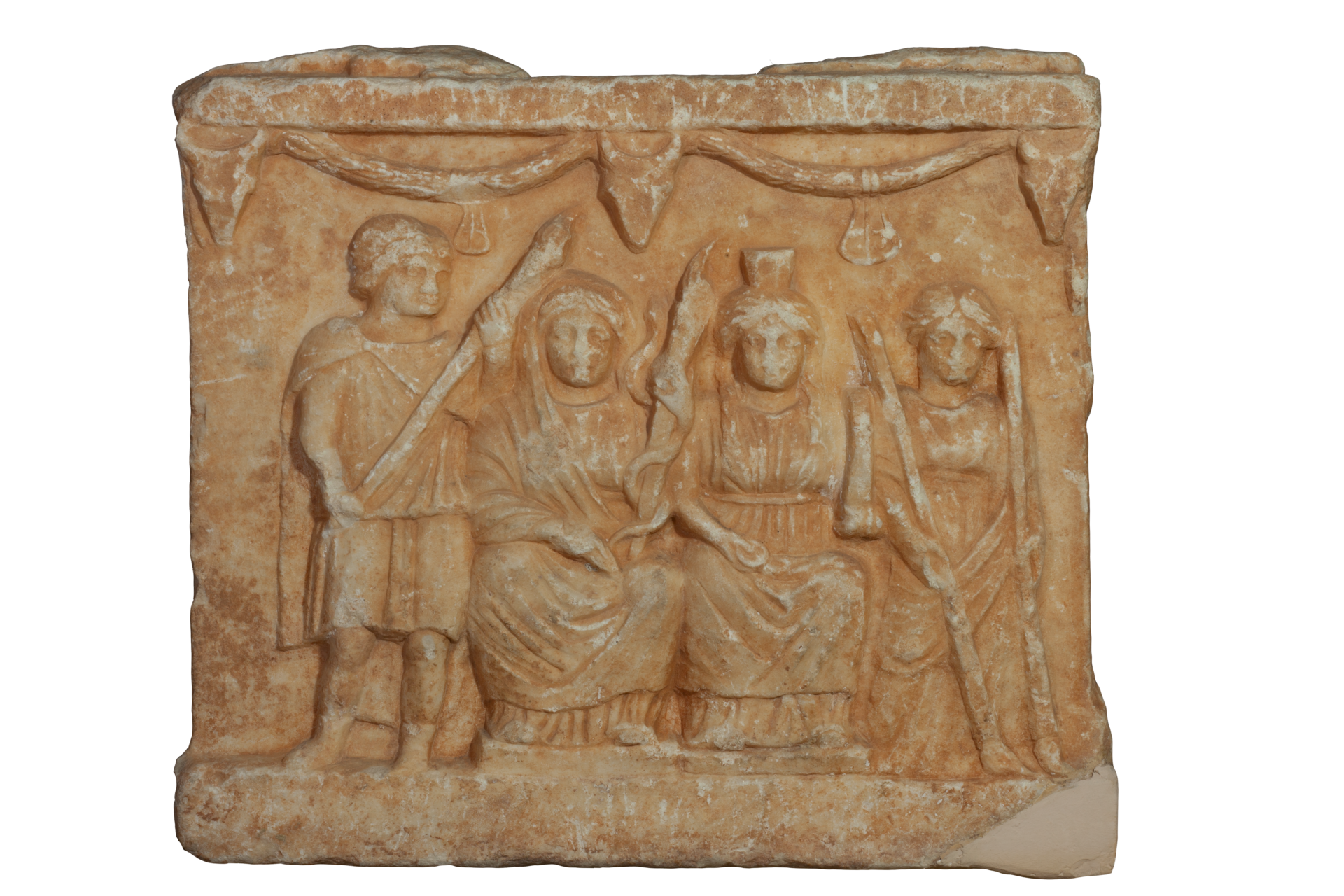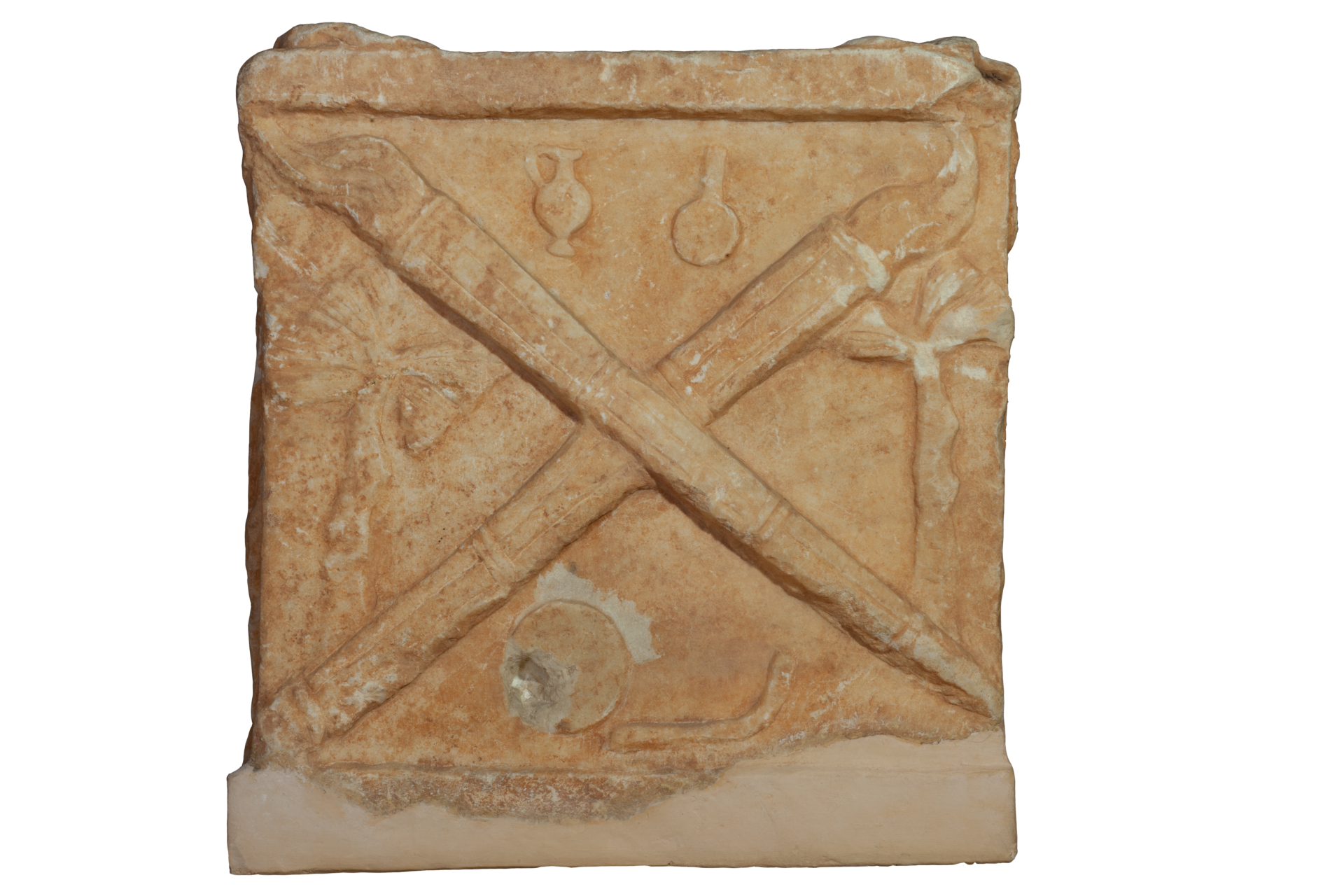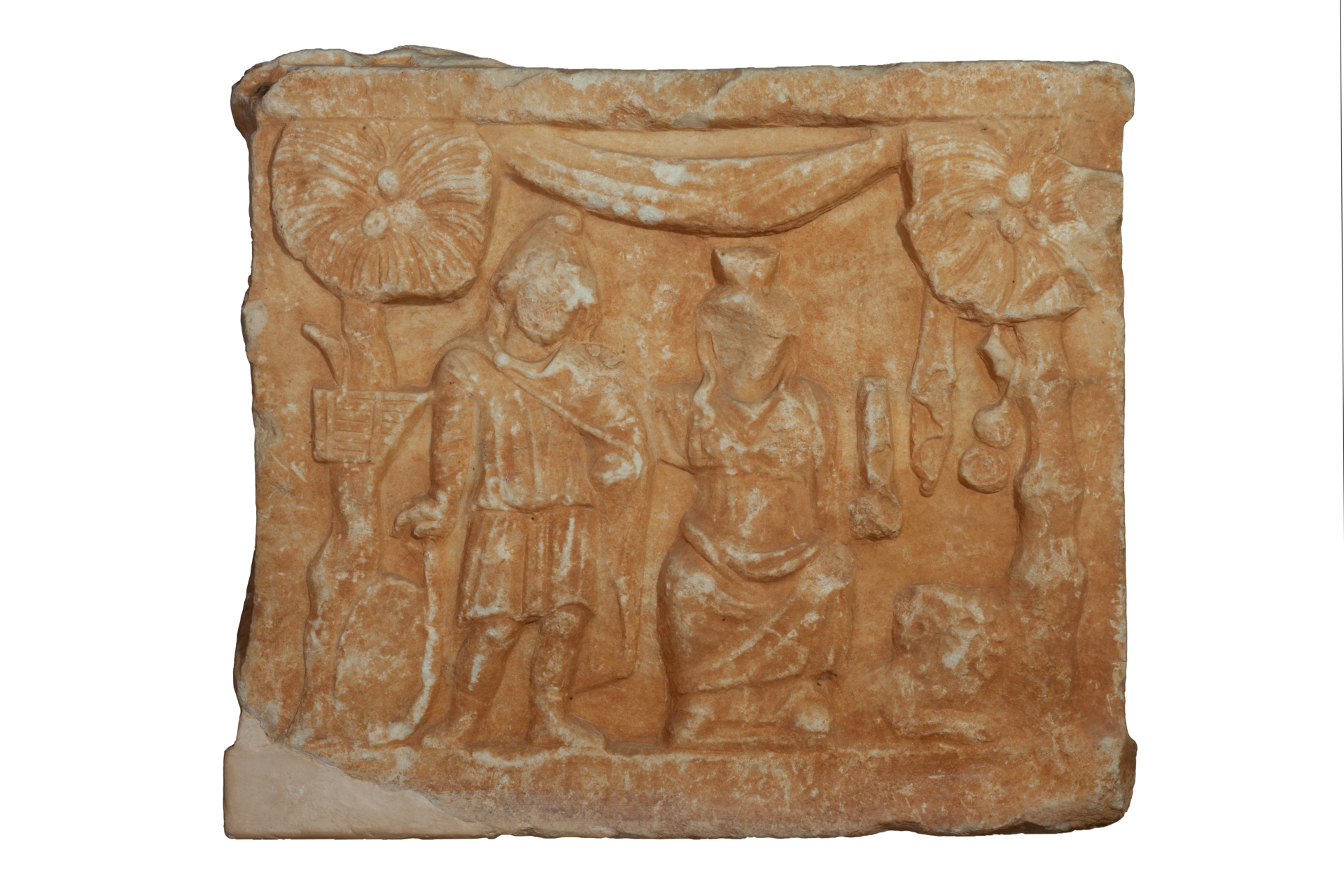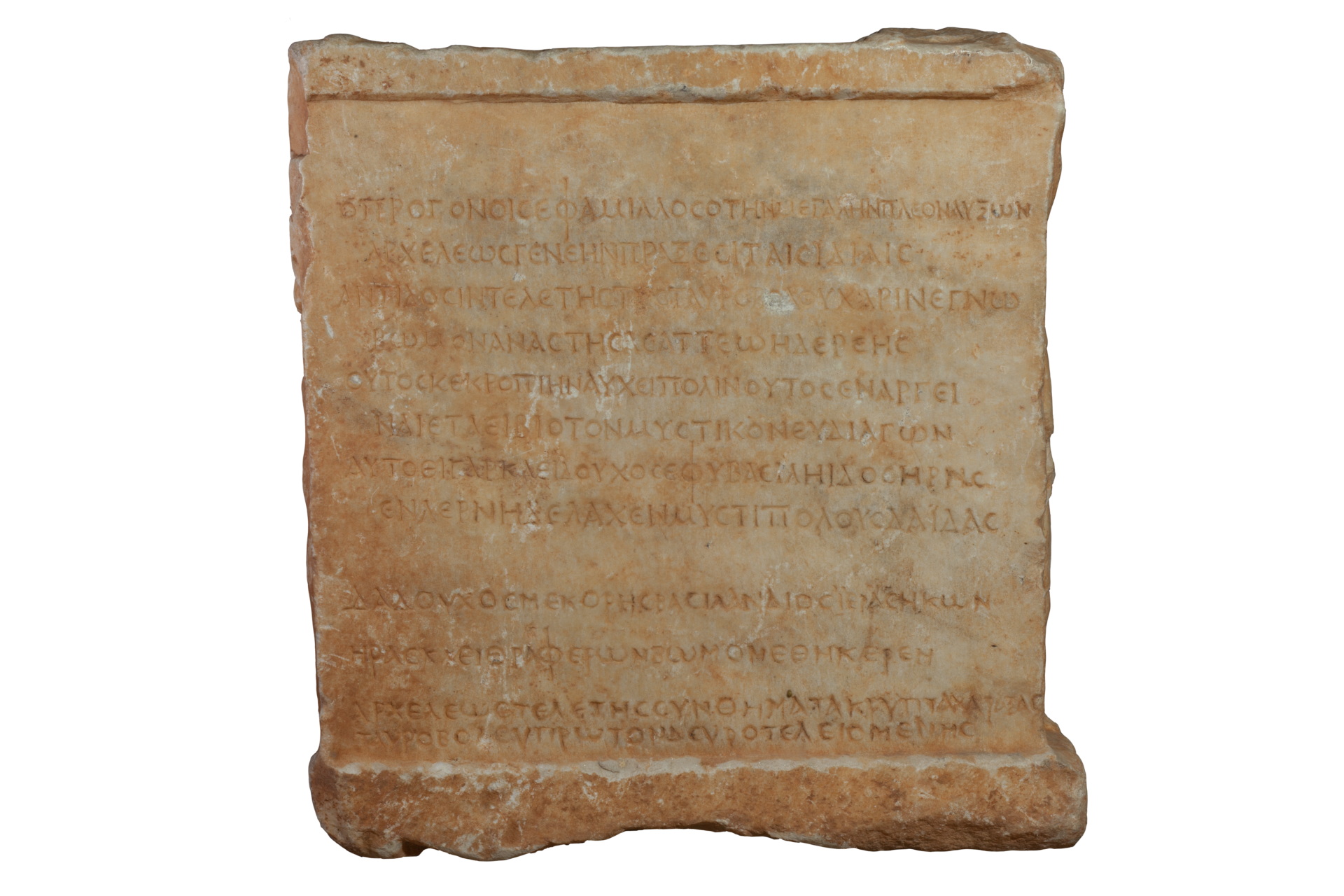Exhibit of the month
Mystery cults, bloody sacrifices and purification
Taurobolic altar
Hellenic National Archaeological Museum
Sculpture Collection, inv. no. Γ 1746
Provenance: Ancient Phlya (modern Chalandri), Athens
Dimensions: height 0,38m., width 0,37m., length 0,40m.
Date: AD 360-370
Display: Room 33
Τhe altar once bore on its upper surface a torch and four lying lions on its four corners, whereas its three sides are decorated with relief representations. One side depicts Rhea-Cybele enthroned, her right hand resting on the shoulder of Attis, who is shown leaning on a staff used in cult ceremonies and for divination. The figures are flanked by pine-trees, from which hang their symbols (a panpipe, a drum and castanets). On the other side is a depiction of Cybele and Demeter seated side by side on a throne. They are flanked by a standing youth (Hermes or rather Iacchus, the god of the procession of initiates into the Eleusinian Mysteries), and Kore-Persephone. The third side has a representation of two crossed torches and various symbols. The fourth side bears an inscription, according to which the altar was dedicated by the priest Archelaos as a symbol of the ceremony of the Taurobolium, which he was the first to perform in Phlya, and apparently in Attica.
The altar is associated with the cult of Rhea-Cybele[1] and Attis and more specifically with the mystic ritual of Taurobolium, performed in her honor. The devotees who participated in this ritual believed that they were reborn and purified for ten years through the blood of a sacrificial bull. They entered naked into a deep pit inside the earth and were covered with the blood of the bull that was sacrificed on the riddled cover of the ditch. Αcording to some scholars, the descent into the pit and the return are reminiscence of Attis’ death and resurrection[2]. From the Roman period onwards, the celebration of the Taurobolium was introduced to the cult of Cubele and spread in Asia Minor, Greece and particularly Italy. Two more Taurobolium altars, bearing similar decoration, have been found in Greece, and indeed in Flya; one also on display at the Hellenic National Archaeological Museum and the second located in the church of Saint George in Chalandri and currently housed in the Aetopouleio Cultural Centre. All three of them date back to the 4th century AD and lead to the conclusion that in Phlya these ceremonies were still performed during Late Antiquity by the followers of the mystery religion of Cybele.
[1] For mystic rituals relating to Cybele, see also Exhibit of the Month_March 2025
[2] Ιt has even been argued that Taurobolium evolved within the context of the Christian influence of purifying baptism, reinforcing the view that this ritual evolved from sacrificial rite to rite of purification.
Dr Chrysanthi Tsouli
BIBLIOGRAPHY
Vermaseren, M. J., Corpus cultus Cybelae Attidisque II, Leiden 1979, 117-118, no. 390, pls. 120-122.
Λουκάς, Ι. Κ., Επανευρεθείς βωμός της Ρέας-Κυβέλης, ΑΑΑ 18 (1985), 225-230.
Sironen, E., The Late Roman and Early Byzantine Inscriptions of Athens and Attica, Helsinki 1997, 92-95, no. 28.
Kaltsas, N., Sculpture in the National Archaeological Museum, Athens 2002, no. 784.
Palaiokrassa, L., Kultinstrumente. Beleuchtungsgeräte, ThesCRA V, 2005, 375 no. 398.
Κατσαούνου, Σ., Συμπληρωματικές μορφές στους αττικούς ναΐσκους της Κυβέλης. Διδ. Διατριβή Ιωάννινα 2012, 324-330. https://freader.ekt.gr/eadd/index.php?doc=34812#p=1
Ασημακοπούλου, Στ., Δήμητρα εν άστει: συμβολή στη λατρεία των γονιμικών θεοτήτων στην Αττική από τους κλασικούς χρόνους έως την ύστερη αρχαιότητα, Dissertation Athens 2017, 234, 242, αρ. Γ15 / Athens HOCRD 2021. https://freader.ekt.gr/eadd/index.php?doc=41446






